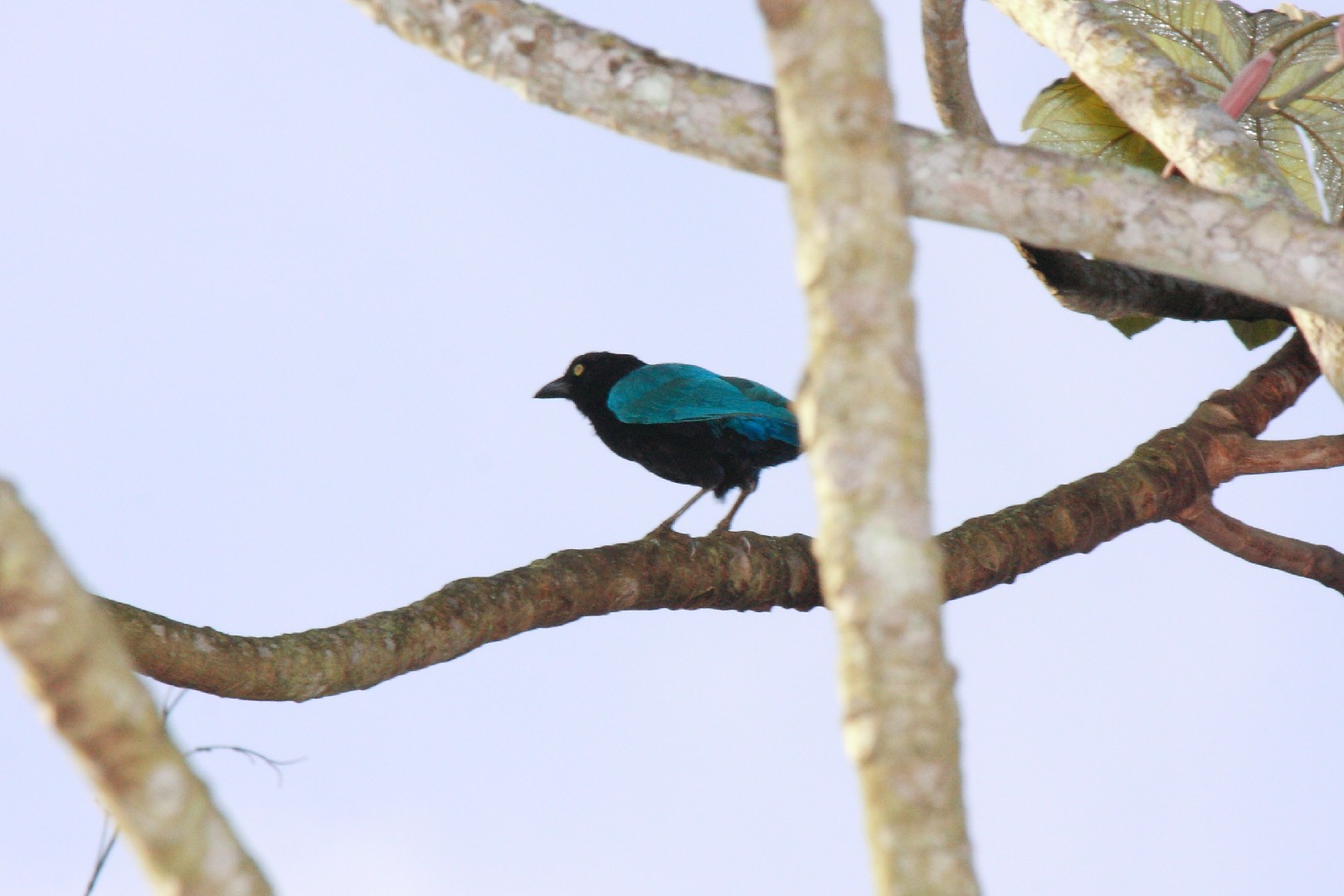San Blas Jay
A species of Typical Neotropical Jays Scientific name : Cyanocorax sanblasianus Genus : Typical Neotropical Jays
San Blas Jay, A species of Typical Neotropical Jays
Botanical name: Cyanocorax sanblasianus
Genus: Typical Neotropical Jays
Content
Description General Info
 Photo By Dominic Sherony , used under CC-BY-SA-2.0 /Cropped and compressed from original
Photo By Dominic Sherony , used under CC-BY-SA-2.0 /Cropped and compressed from original Description
The adult San Blas jay is between 27 and 35 cm (11 and 14 in) long and weighs between 92 and 122 g (3 and 4 oz). The sexes are similar; the adult has back, rump, wings and tail blue and the remaining plumage black. There is a small crest on the front of the head, the bill is black, the irises are white and the legs are black. The juveniles are similar apart from a larger crest, a yellow bill and brown eyes. 
Size
35 cm
Life Expectancy
6-8 years (wild), 10-15 years (captivity)
Nest Placement
Tree
Feeding Habits
San Blas Jay predominantly consumes insects, lizard parts, and the pericarp of cocoa-palms, showcasing a diverse omnivorous diet. Foraging in trees and on the ground displays their adaptability in securing various food sources.
Habitat
San Blas Jay predominantly inhabits a range of dry to semihumid environments, typically associated with forested areas and their peripheries. This species shows adaptability to various vegetative conditions, thriving within mangrove swamps, dense scrublands, as well as human-modified landscapes like plantations and coconut groves. Broader geographical regions that encapsulate this bird's habitat span tropical and subtropical zones with a preference for thickets and woodlands offering both food and shelter.
Dite type
Omnivorous
General Info
Feeding Habits
Bird food type
Distribution Area
This jay is endemic to Mexico. There are two subspecies; C. s. nelsoni is found in southwestern Mexico, from Nayarit, Jalisco and Colima southward to western Guerrero; and C. s. sanblasianus is found in the coastal region of Guerrero. The habitat includes dry and semi-moist woodland, thickets, groves and plantations as well as mangrove areas. This bird is not found deep in the forest. 
Species Status
Not globally threatened.
Scientific Classification
Phylum
Chordates Class
Birds Order
Perching birds Family
Crows and jays Genus
Typical Neotropical Jays Species
San Blas Jay